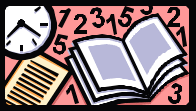Г. В. Царева
 Скачать 1.52 Mb. Скачать 1.52 Mb.
|
|
Add to the table information about other modern programming languages. For example, Julia, Dart, Typescript and others. 6. Complete the sentences choosing proper endings: 1. RUST is ____ a) released by Google; b) has memory and concurrency safety; c) competes with Java. 2. GO is ____ a) a very difficult programming language; b) has no garbage collector; c) has massive tooling support. 3. SWIFT is ____ a competitor of Objective-C; has no null safety; not used in iOS applications.  LISTENING SKILLSListen to Vicky Cameron, the Information Technology (IT) lecturer from Units 7 and 12, talking to her students about C language. Complete the table with the relevant information.
D  ISCUSSION ISCUSSIONCompare two computer languages by discussing the following points: – date of release – developer – main features – use cases Notes for student ADart is one of programming language by Google. Led by the famous Danish Software Engineer Lars Bak (who lead the Development of Chrome’s V8 JavaScript Engine), Google has released Dart in 2013. Dart is a general-purpose programming language which supports Strong typing and Objected-Oriented programming. Dart can also be transcompiled to JavaScript and can run where JavaScript runs means virtually everywhere (e.g. Web, Mobile, Server). Main Features: Like other Google languages, Dart also heavily focuses on developer productivity. Dart is hugely productive and loved by developers because of its clean, simple, terse syntax. Dart is one of the few languages which supports JIT compilation (compilation during Runtime) and AOT compilation (compilation during creation time). Thus Dart can target JavaScript runtime (V8 Engine) and Dart can be compiled to fast Native code (AOT compilation). Dart also has excellent Tooling support and the huge Ecosystem of Flutter. The increasing popularity of Flutter will only increase the adoption of Dart. Notes for student B Julia is a dynamic, high-level programming language that offers first-class support for Concurrent, Parallel and Distributed Computing. The first stable version of Julia is released in 2018 and soon got the attraction of the community and industry. Julia can be used in Scientific Computing, Artificial Intelligence, and many other fields and can finally solve the “Two-Language” problem. Features: Julia tries to combine some of the best features of the existing programming language in high performance and Scientific computing without sacrificing performance. It uses multiple-dispatch programming paradigm at its core. It has built-in support for Concurrent, Parallel and Distributed Computing. It also offers asynchronous I/O for I/O intensive tasks. It is Blazingly fast and can be used in Scientific Computing where millions of threads are required. Main Use Cases: Scientific Computing High-performance computing Data Science Visualization  WRITING Read these sentences and then use the words in bold to complete the sentences below. There are many domestic uses of technology. such as entertainment and cooking. Industrial robots are used in car factories to do routine jobs. A word processor is a computer programme that we use for writing. One of the ways we put information into a computer is by typing on a keyboard. My mum got a microwave (oven) because they're so fast, but she never uses it. Computer hardware is the machine and all the parts inside. Computer software is the programmes and games that run on computers. Double-click the left button on your mouse to select the icon. I'd love cable TV so that I could see all the latest films, but it's really expensive. Some people suffer from technophobia and feel very threatened by new technology. My dad just got ____ put in so that he can get the sports channel. You'll think I've got ____, but I really have no idea about computers. The chicken should take around half an hour in the ____. You've got a ___ problem on your computer. I think it's the keyboard. It'll be a while before we see robots in ____ use. I've just bought a new piece of ____ for my computer so that I can play games on-line. These machines are designed for ____ use in factories. The ____ on my laptop is so small that I keep hitting the wrong keys. Move your ____ and the cursor moves on the screen. The great thing about using a ____ is that you can just delete your mistakes.  SUPPLEMENTARY READING FEED IN ENGLISH, PRINT OUT IN FRENCH Once upon a time, according to a much told story, a computer was set a task of translating “traffic jam” into French and back into English. The machine buzzed, clicked, blinked its lights and eventually came up with “car-flavored marmalade”. Machine translation has come a long way since then. Computer translation systems are now in use in many parts of the world. With so many official languages, translating and interpreting take up more than 50% of the Community’s administrative budget. But although the efficiency of machine translation is improving rapidly, there’s no question of human translators being made redundant. On the contrary, people and machines work together in harmony. Today’s computers are of little value in translating literary works, where subtlety is vital, or the spoken word, which tends to be ungrammatical, or important texts, where absolute accuracy is essential. But for routine technical reports, working papers and the like, which take up so much of the translation workload of the international organizations, computers are likely to play an increasing role. The method of operation will probably be for the machines to make a rough version, which the translator will then edit, correcting obvious mistakes, and where necessary referring back to the original. If machines can translate languages, could they ever teach languages? Yes say enthusiasts, although they doubt that the teacher could ever be totally replaced by a machine in the classroom. Good old teachers know best!  FINAL TEST 1. Put the following sentences in the same sequence as the information is arranged in the introductory text. Programs written in assembly languages are translated into machine code by a special program called an assembler. It’s possible to expect the appearance of computers, which will be able to understand human languages. High-level languages make programs easier to write, modify and understand. Writing a machine code program takes a very long time is best left to experts 2. Choose the right English equivalent to the following Russian sentence. Программу, написанную на одном из языков высокого уровня, следует преобразовывать в машинный код. The program, written in one of high-level languages, should be converted into machine code. The program, written in one of assembly languages, should be converted into machine code. The program, written in one of low-level languages, should be converted into machine code. 3. Choose the right Russian equivalent to the following English sentence. Although the efficiency of machine translation is improving rapidly, there’s no question of human translators being made redundant. Вследствие того что эффективность машинного перевода быстро растёт, встаёт вопрос о том, что перевод, выполненный человеком, больше не потребуется. Хотя эффективность машинного перевода быстро растёт, не может быть речи о том, чтобы отказаться от переводов, выполненных человеком. Несмотря на то что эффективность машинного перевода быстро уменьшается, встаёт вопрос о том, чтобы отказаться от переводов, выполненных человеком. 4. Find the equivalents in two languages.
5. Complete the sentences with the proper word. High level language, which is mainly used for business applications but is not as suitable for mathematics is called ____. Codes which consist of a series of binary digits and which central processors operate on are known as ____. Basic languages, where the program is similar to the machine code version, are ____. A general-purpose language often used in colleges and universities as a teaching language is called ____. Computer languages, which resemble English to some extent, are called ____. A general-purpose language, which is interactive, easy for beginners and very user-friendly, is known as ____. Programs written in one of the high level languages are known as ____. Computer language developed to support the UNIX operating system is called ____. A computer program that translates instructions from a low-level language into machine code is called ____. 6. Choose the right variant. 1. The only language computer can understand directly is called ____. A. Assembly language B. High-level language C. Machine code D. Low-level language 2. LISP language was written in ____. A. 1958 B. 1973 C. 1964 D. 1959 3. FORTRAN was really designed for use on ____. A. minicomputers B. mainframe computers C. microcomputers 4. ____ as a means of communication is very difficult to write. A. symbolic language B. machine code C. high-level language D. compilation 5. High-level languages are usually ____. A. problem-oriented B. machine-oriented 6. Computer language designed to be used by very young children is ____. A. PASCAL B. FORTRAN C. ALGOL D. LOGO 7. High-level programming languages are ____. A. BASIC, FORTRAN B. assembly and machine Languages UNIT VIII DATA COMMUNICATION SYSTEMS  INTRODUCTORY TEXTA multi-user system is made up of a number of terminals sharing a mainframe computer. Each terminal consists of at least one input device and output device and allows the user to communicate with the computer. There are a number of different types of terminals. For example, a teletype terminal is made up of a keyboard and a printer which gives a hardcopy output. A VDU terminal has a keyboard and a screen. It usually has its own internal processor which deals with the input/output and editing of data and is, therefore, referred to as an intelligent terminal. A graphics terminal is similar to a VDU terminal but is specially designed to display graphics such as pictures, maps, graphs, diagrams etc. and has a lightpen attached to allow the user to “draw” on the screen. It is normally used for Computer Aided Design. Often a mainframe computer and its terminals are situated a long distance apart. They may be in different rooms, buildings, cities or even countries. These remote access terminals are connected to the mainframe computer by telecommunication links (e.g. telephone lines). Computers and terminals connected together using telecommunications are known as a data communications (or datacomm) system. Datacomm systems may also be formed from a number of computers and peripherals connected together in a network. This allows software and hardware to be shared by a large number of users over long distances. A network contained in a relatively small area, such as an office building, factory site or university campus, is known as a Local Area Network or LAN. The two main types of LAN are single cable networks and loop networks. If the network is connected over a large area it is called a Wide Area Network or WAN. This may be linked using telephone lines. Dedicated lines are permanently connected to a system but dialed lines are only connected when needed. However, existing telephone lines are designed to carry analogue signals and not the digital signals used by computers. A special device is therefore needed at each end of the telephone line to convert the signals to the correct form. This device is known as a modulator/demodulator or modem. A special kind of modem known as an acoustic coupler has rubber cups into which an ordinary telephone can be plugged. Although this avoids having to make a special connection into the telephone system, it is more likely to suffer from corruption of data due to interference. Modern telecommunications systems are being developed using fibre-optic cables. These allow data to be transmitted as pulses of light along thin strands of glass (about the thickness of a human hair). In this way, data can be communicated at very high speed, measured in bauds i.e. bits per second. It also results in very low level of interference. Data can be communicated over long distances and over water by using microwave radio links. These transmit and receive high frequency microwave signals using small dish aerials. Since there must be a clear path between these aerials, they are usually situated at the top of high towers. Data communications over long distances can make use of communications satellites, which are placed in fixed orbits above the Earth. The satellites receive signals from ground stations on the Earth, amplify the signals then retransmit them to other ground stations, which may be in another country or another continent. The development of efficient data communications systems is an important aspect of the growth in information technology.  |
